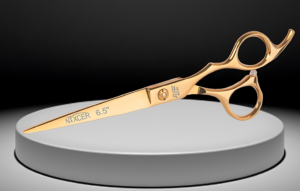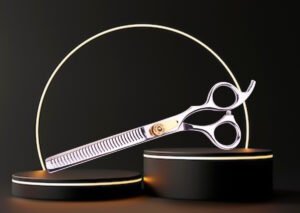The world of hair styling is constantly evolving, with new techniques emerging to meet the changing needs and preferences of clients. To stand out as a modern hair stylist, mastering both traditional methods and cutting-edge techniques is essential. Whether you’re looking to add texture, create volume, or give a bold new shape to your client’s hair, using advanced cutting techniques can transform your styling skills and help you offer fresh, trendy looks.
In this post, we will explore some of the most effective cutting-edge techniques that modern hair stylists can incorporate into their repertoire.
1. Texturizing for a Modern Finish
Texturizing is a popular technique that adds depth and movement to the hair, making it a favorite for many stylists and clients alike. By using texturizing scissors or point cutting, you can remove bulk from thicker hair or add body to finer hair. This method is perfect for achieving that effortless, natural look many clients love.
For clients with long, straight hair, texturizing can prevent the cut from looking too heavy. For shorter cuts, it adds definition and character. You can adjust the amount of texturizing based on the client’s hair type and desired style.
Tip: Always texturize after the main cut to control the weight of the hair and ensure even results.
2. Razor Cutting for Soft Layers
Razor cutting is a technique that creates soft, blended layers, making it perfect for creating that modern, tousled look. A razor, unlike scissors, removes the hair with a slicing motion, resulting in a feathery, tapered edge. This technique works especially well on clients with thick or wavy hair, as it helps to thin out the hair while maintaining movement and texture.
Razor cutting can be used to create short, edgy hairstyles or to add dimension to longer hair. It’s ideal for clients who want a soft, natural finish rather than blunt, structured lines.
Tip: Razor cutting is best performed on damp hair, and it requires a very sharp tool to avoid damaging the ends of the hair.
3. Dry Cutting for Precision
While most haircuts are traditionally done on wet hair, dry cutting has become a go-to technique for modern stylists seeking precision. Dry cutting allows you to see how the hair falls naturally, making it easier to visualize the final shape of the cut. It’s especially effective for clients with curly or textured hair, where shrinkage can change the length once the hair dries.
Dry cutting is also perfect for refining a haircut, as it gives you more control over the final look. You can use this technique to perfect layers, create sharp edges, or add final touches to any style.
Tip: Work slowly and check your progress frequently, as dry hair can show imperfections more easily than wet hair.
4. Slide Cutting for Seamless Layers
Slide cutting is a technique that creates soft, seamless layers without removing too much bulk. It involves sliding the scissors along the length of the hair while slightly opening and closing the blades. This method is perfect for long hair and works well to create layers that flow naturally and blend smoothly.
Slide cutting is especially useful for clients who want layers but are concerned about losing too much length or volume. It can also add subtle movement and texture to finer hair without making it appear too thin.
Tip: Use light pressure when slide cutting to avoid creating visible lines in the hair.
5. Undercutting for Versatile Styles
Undercutting is a technique where the hair underneath is cut shorter than the top layers, creating a contrast in length. This can be done to reduce bulk in thick hair, or to add an edgy, modern look to a style. It’s a versatile technique that works for both men and women, offering a variety of styling options depending on how much of the undercut is exposed.
For women, an undercut can be a hidden surprise that’s only revealed when the hair is pulled up. For men, it offers a trendy, sleek look that’s easy to style and maintain.
Tip: Undercutting should be customized based on the client’s hair texture, face shape, and desired level of contrast.
6. Blunt Cutting for Sharp, Defined Lines
Blunt cutting is a classic technique that’s been modernized for today’s styles. By cutting the hair with hair cutting scissors straight across, you create sharp, defined edges that give the hair a bold, polished look. Blunt cuts are perfect for clients with fine hair who want to create the illusion of thickness, as well as for those seeking a sleek, minimalistic look.
This technique is often used for bobs and other short hairstyles but can also be applied to longer cuts to give a clean, sophisticated finish.
Tip: Precision is key when performing blunt cuts. Ensure that the hair is sectioned properly, and use sharp scissors to achieve the cleanest lines.
Final Thoughts
Mastering these cutting-edge techniques will enable you to offer your clients a wide range of modern, trendy styles. From texturizing and razor cutting to blunt cuts and undercuts, each technique has its place in the modern stylist’s toolkit. Whether your client wants a sleek, sharp look or a softer, more natural finish, having these skills at your fingertips ensures that you can meet their needs with precision and creativity.
As hair styling continues to evolve, staying up to date with advanced techniques allows you to stay ahead of trends and consistently provide your clients with fresh, contemporary cuts with professional hair cutting scissors.



